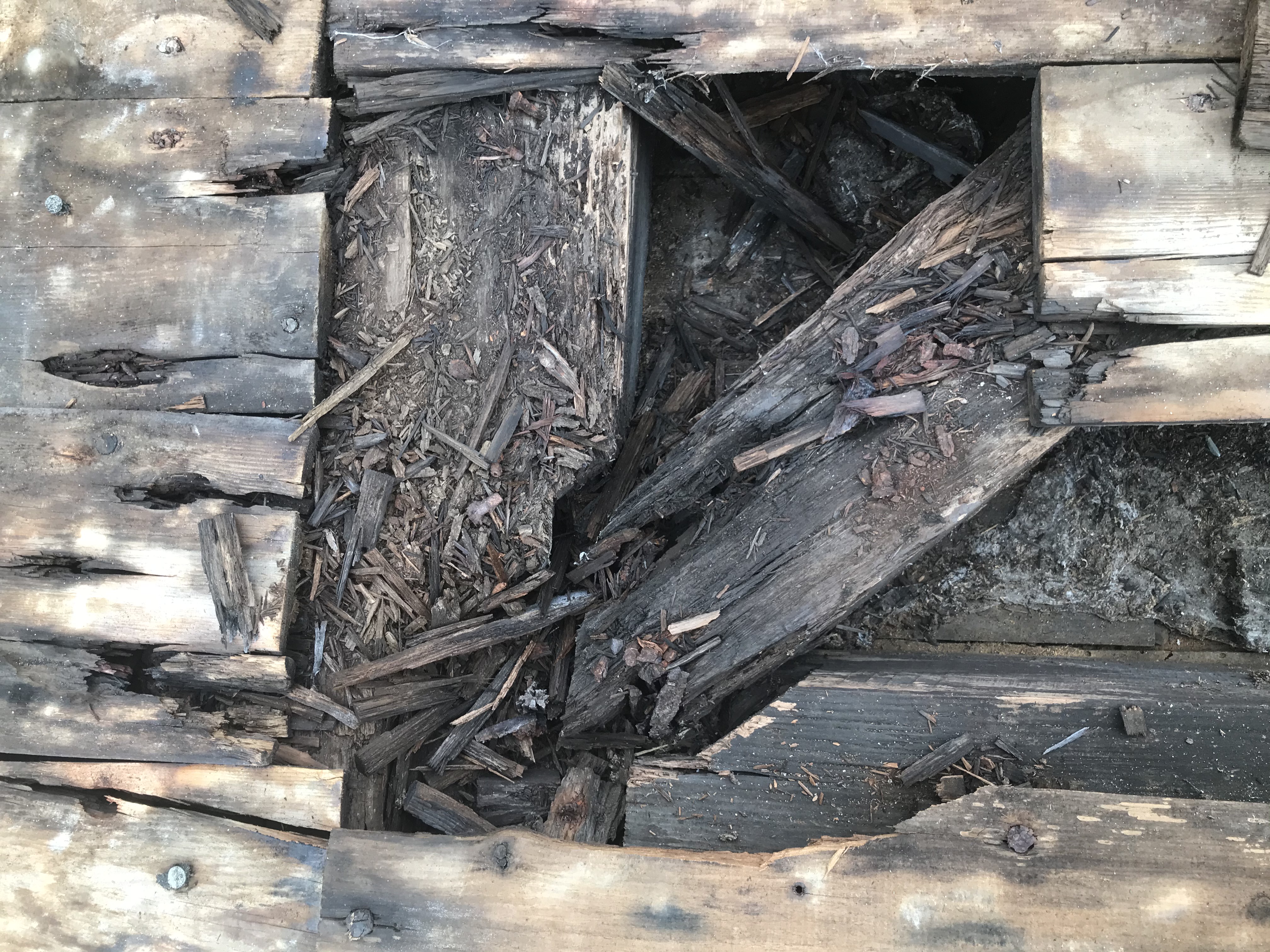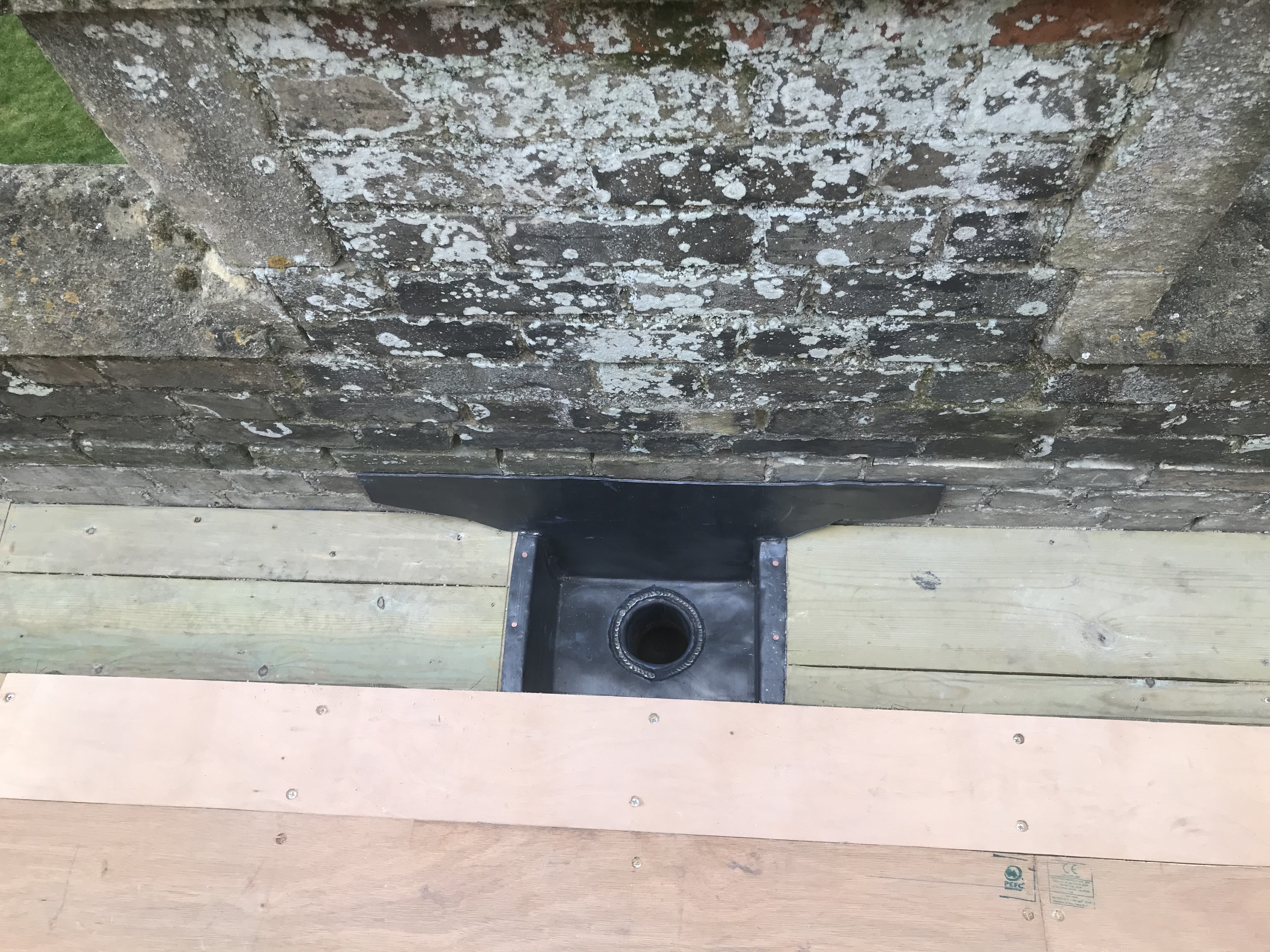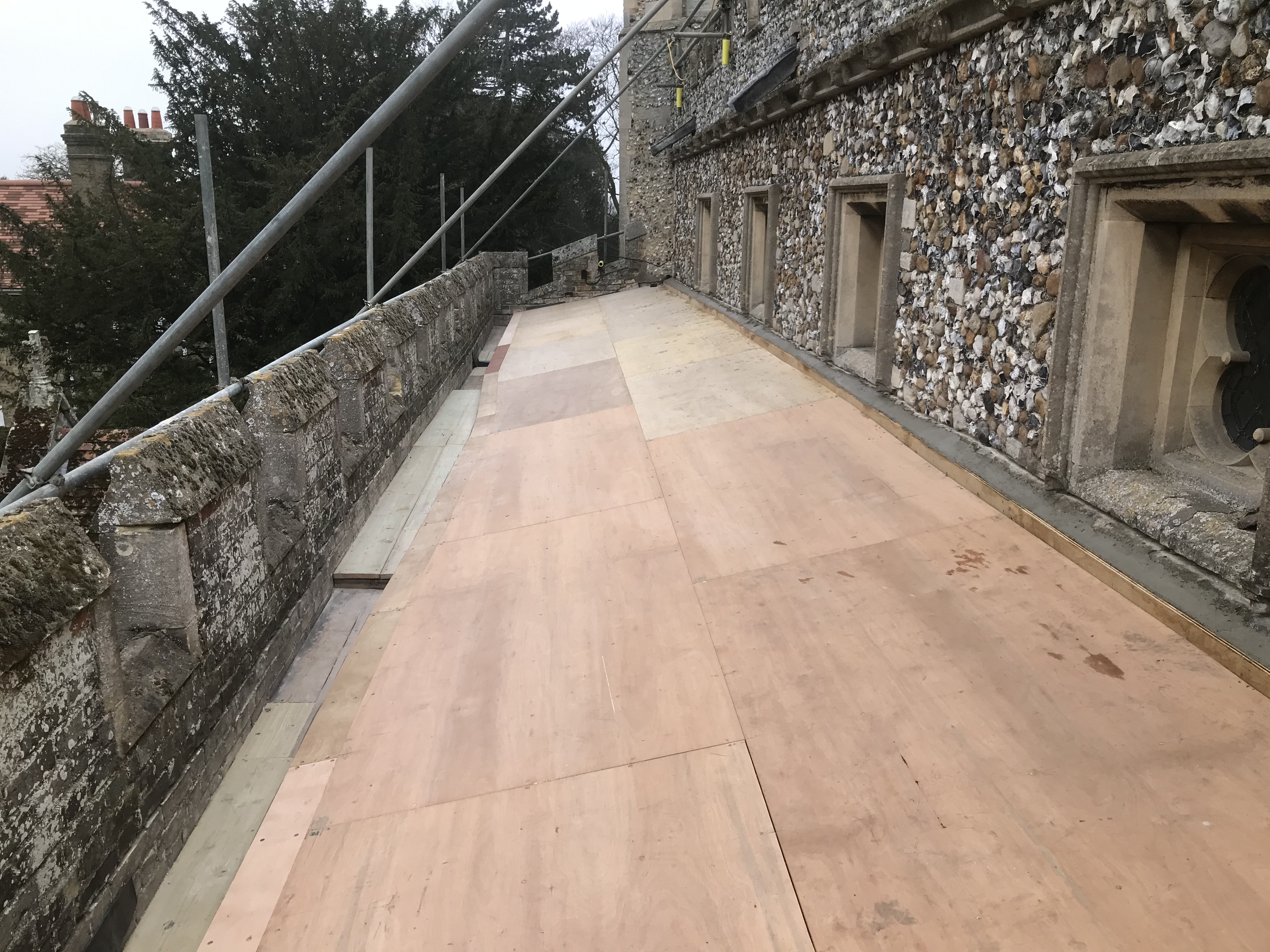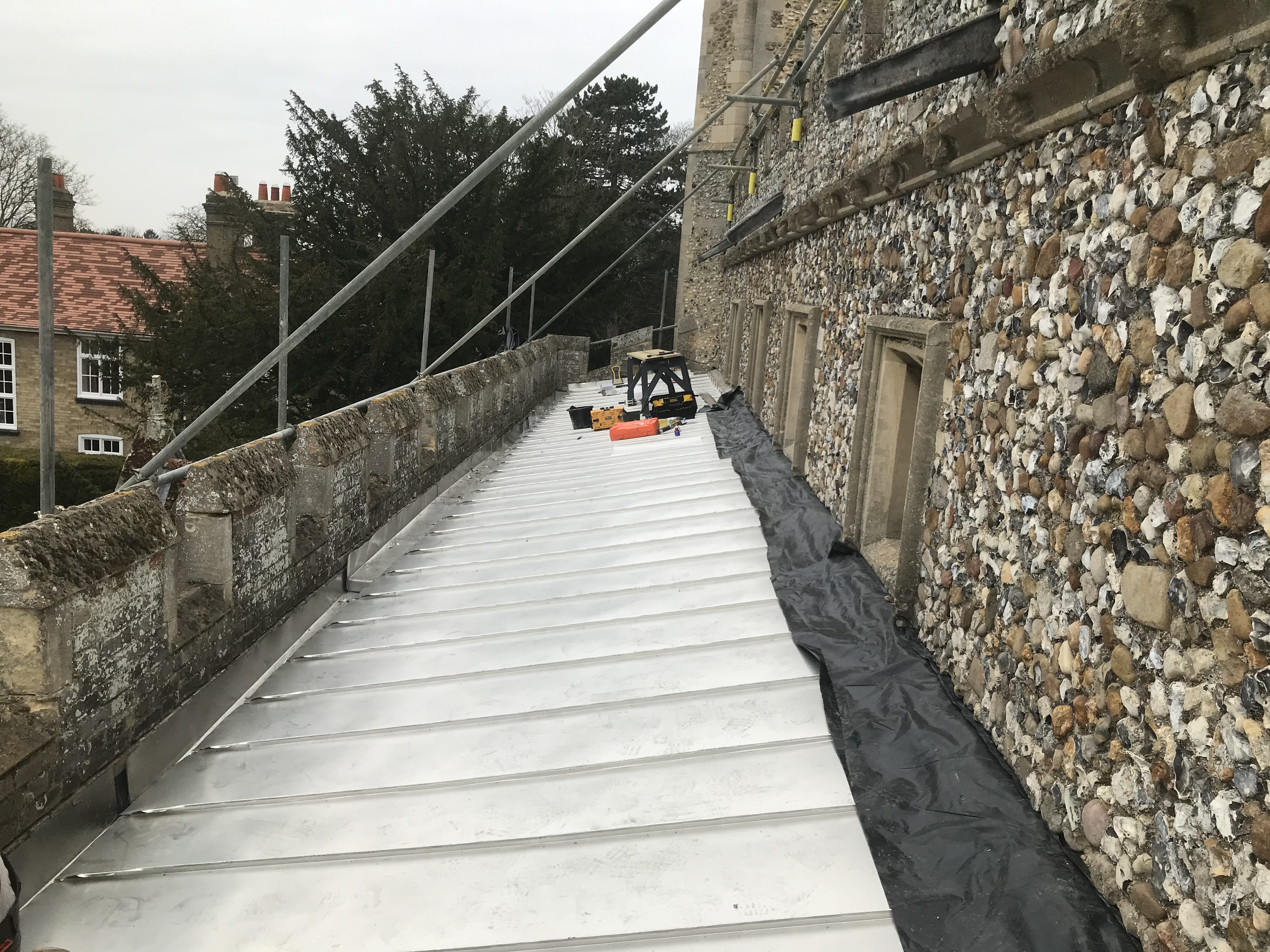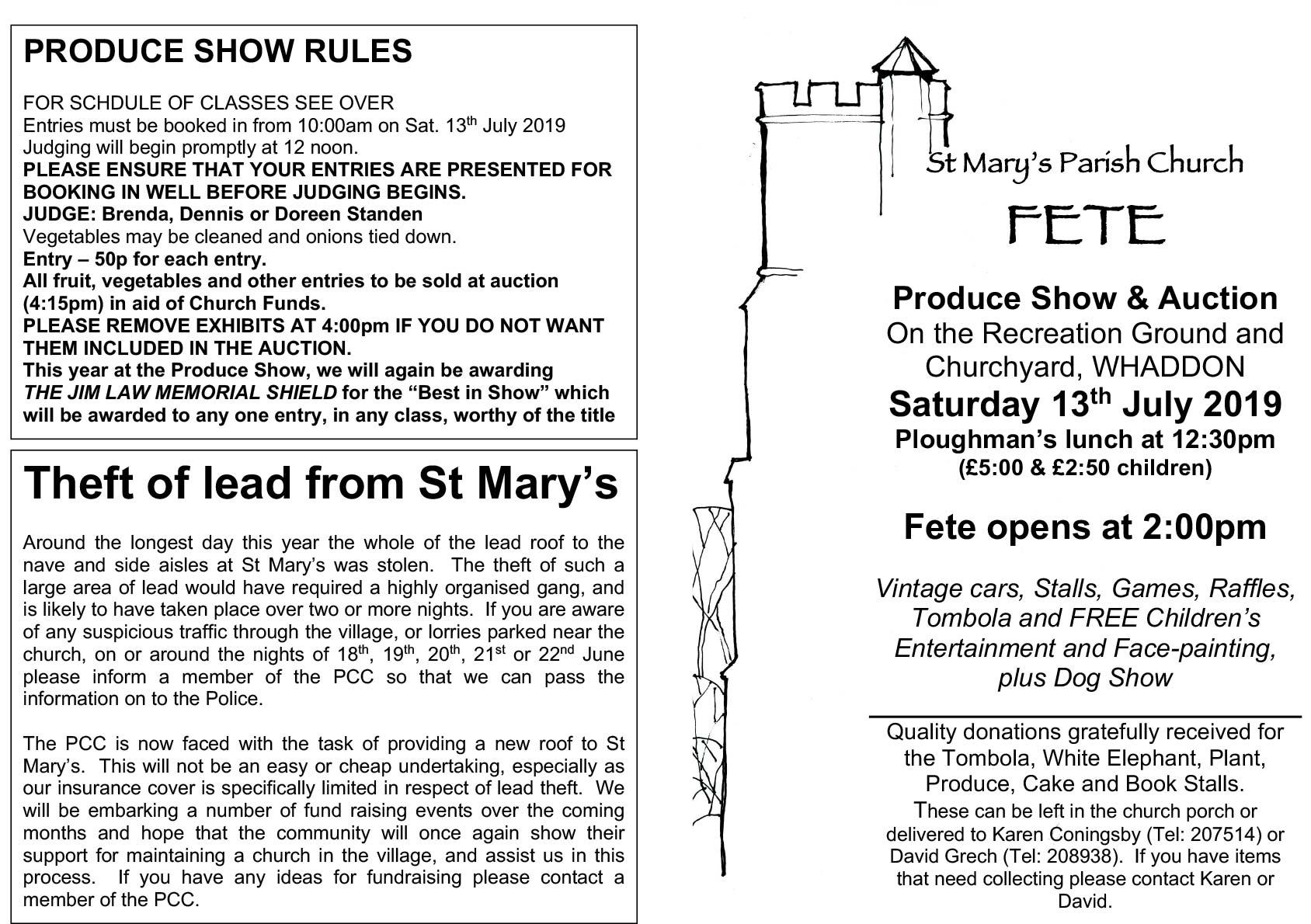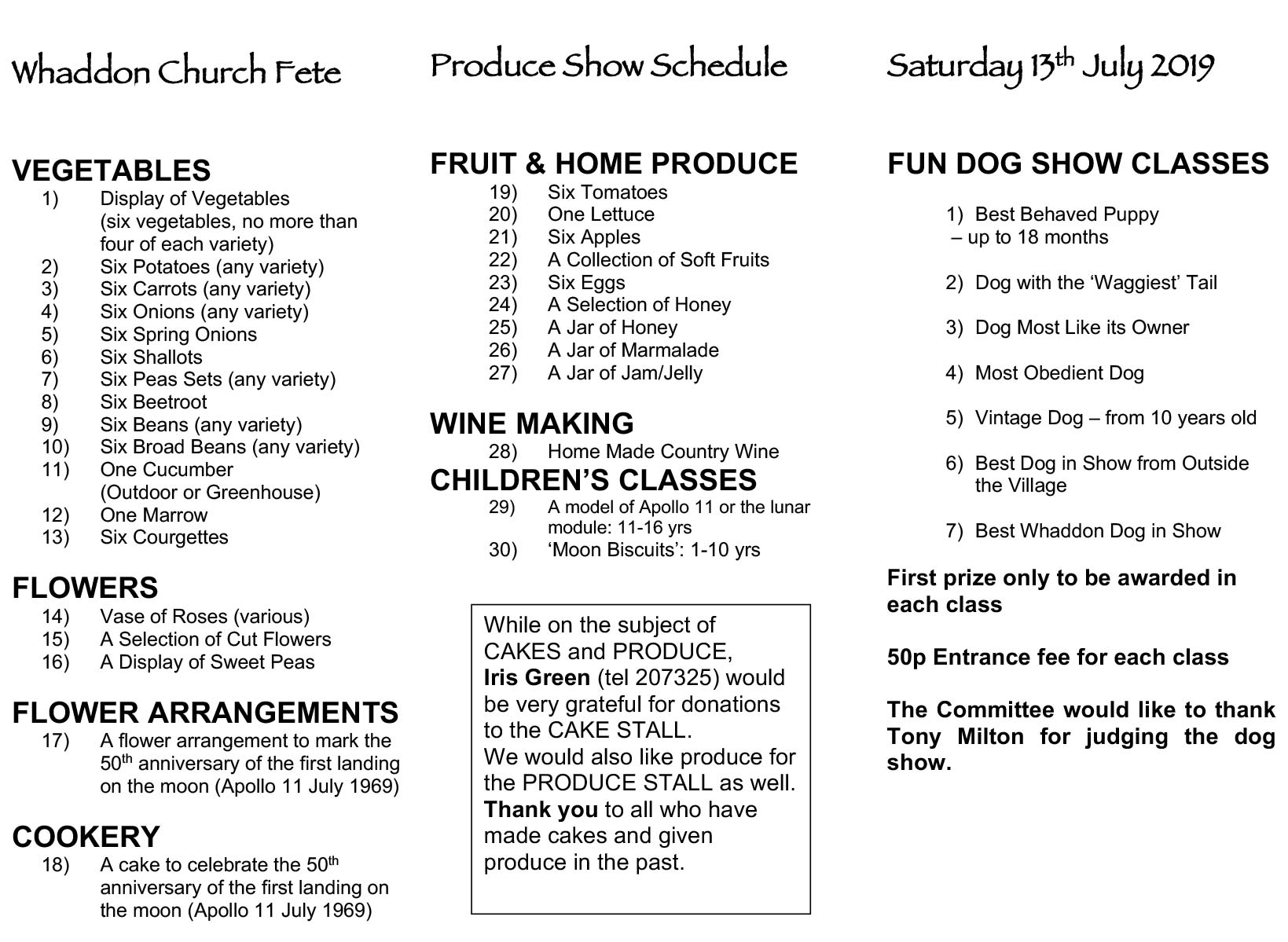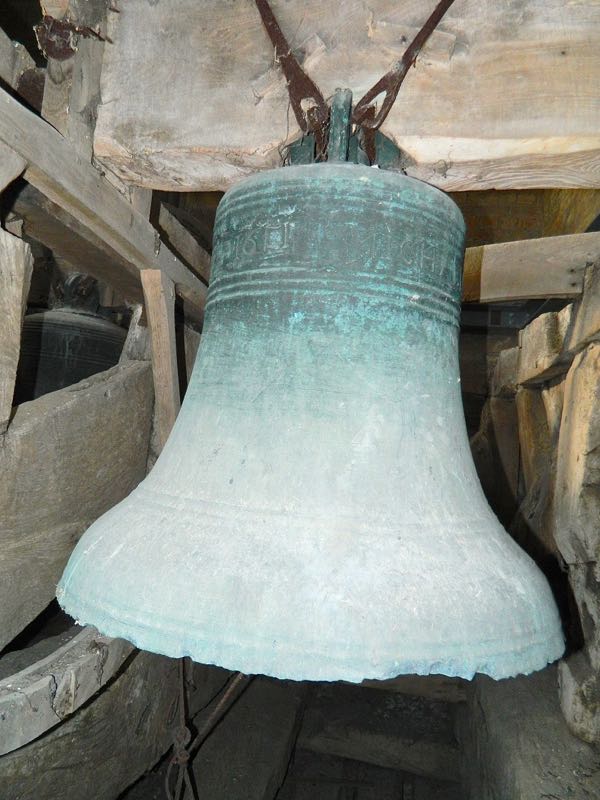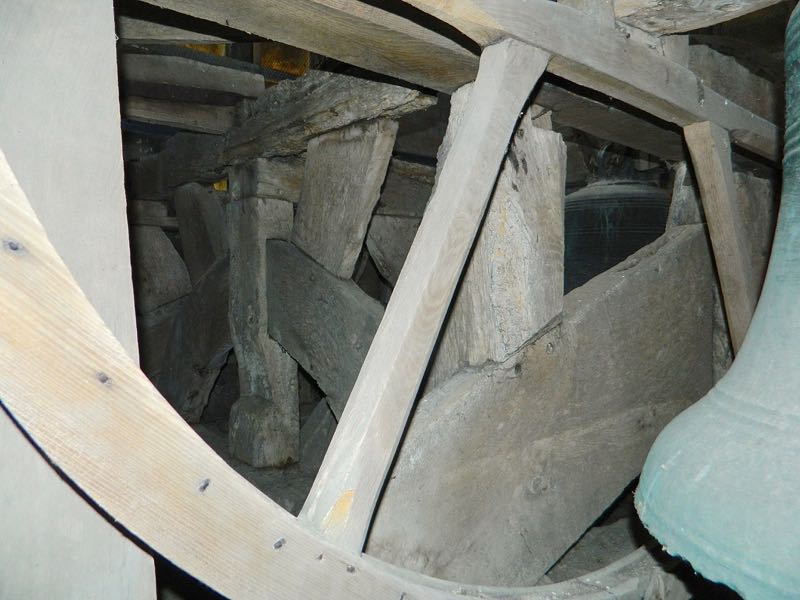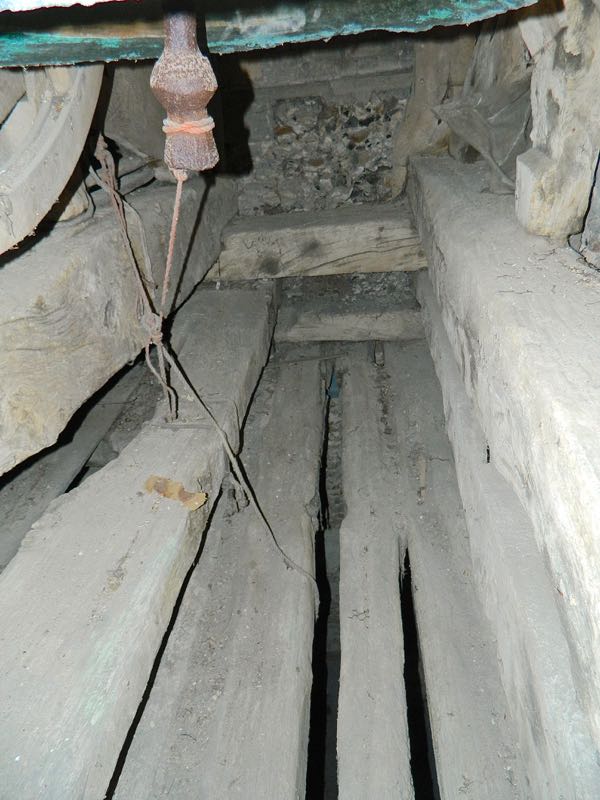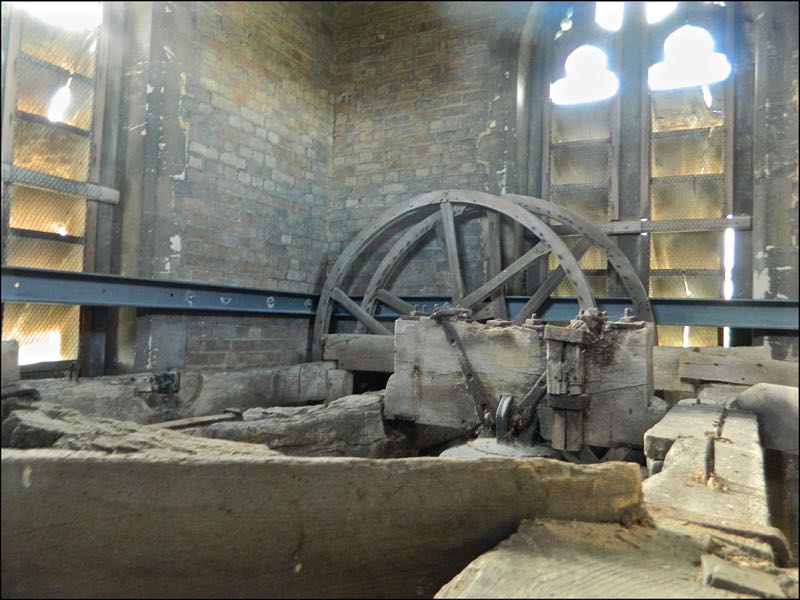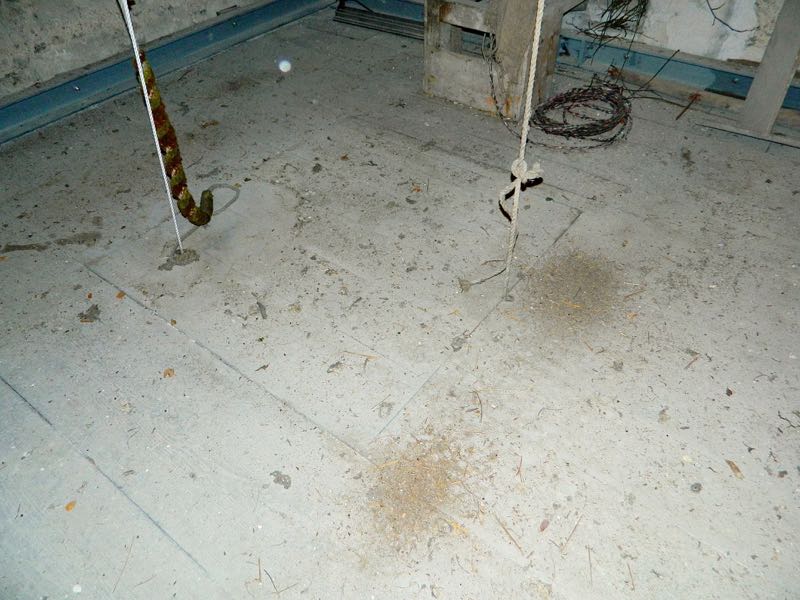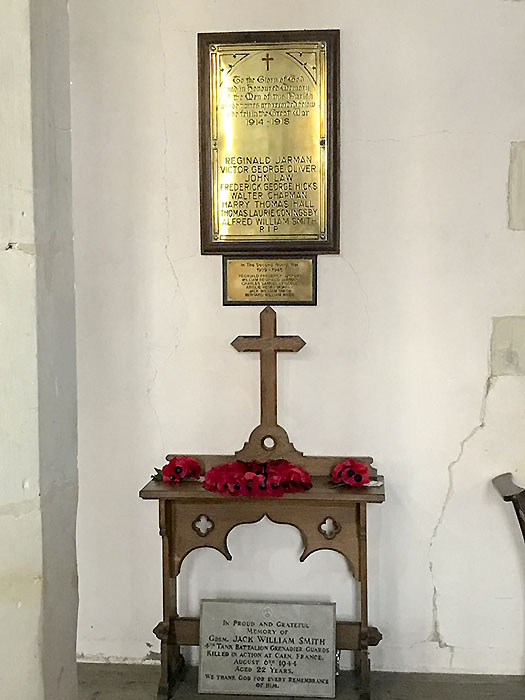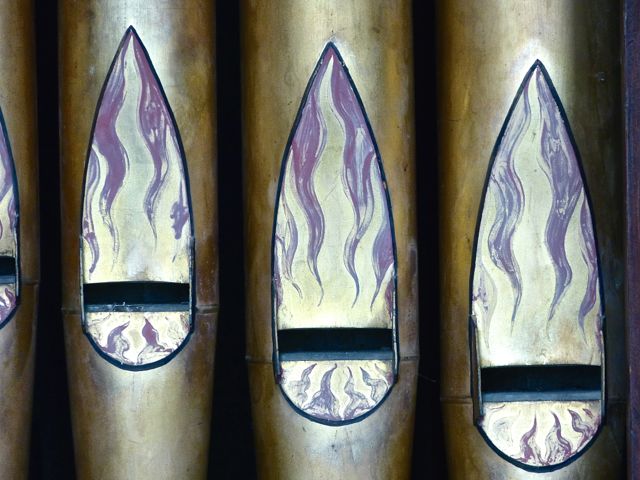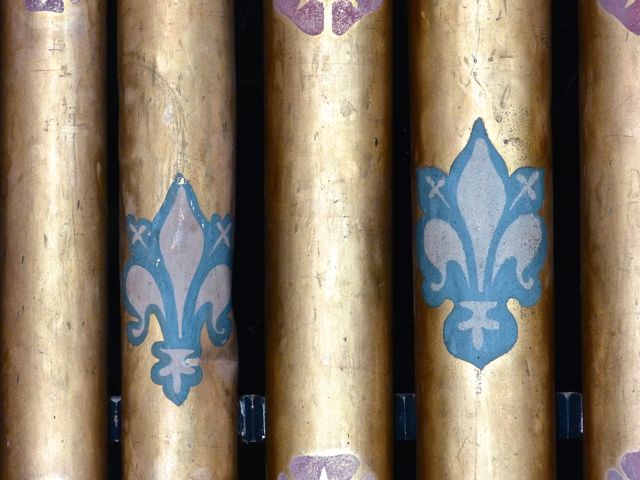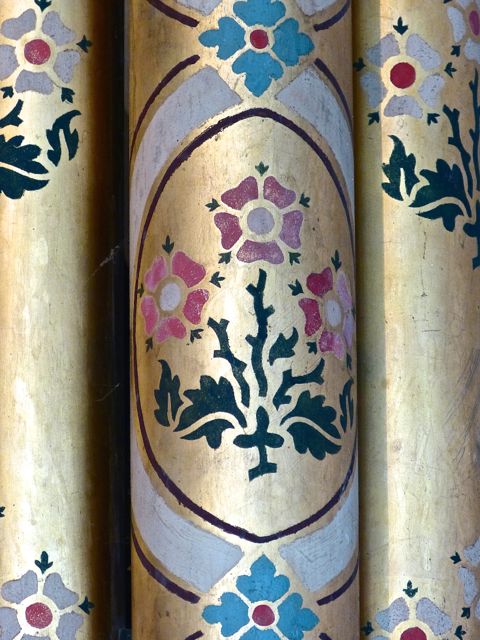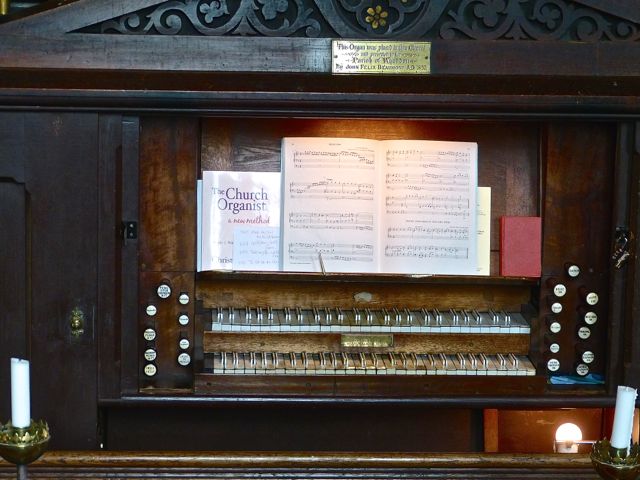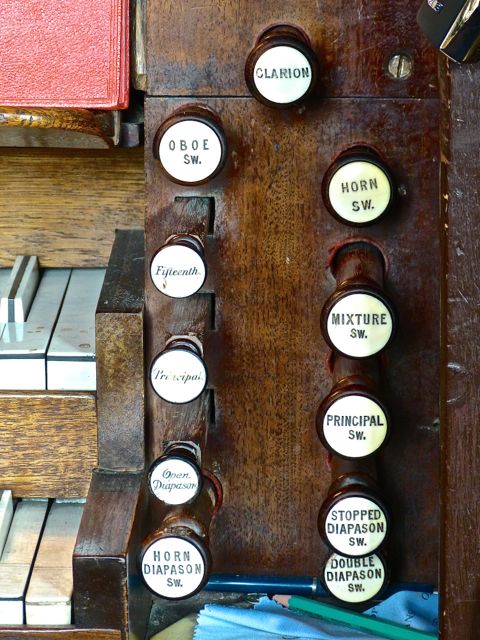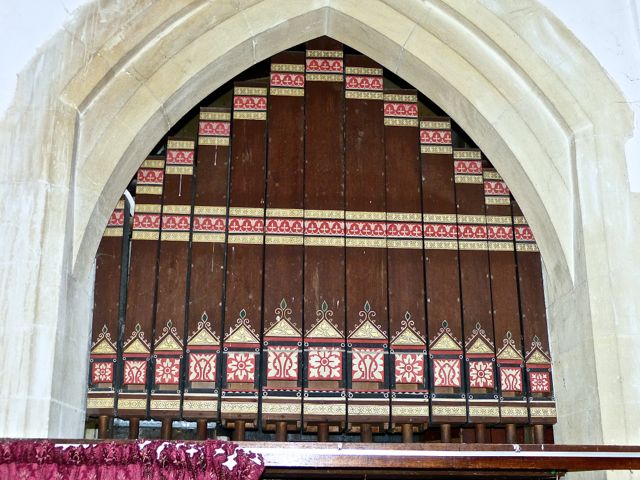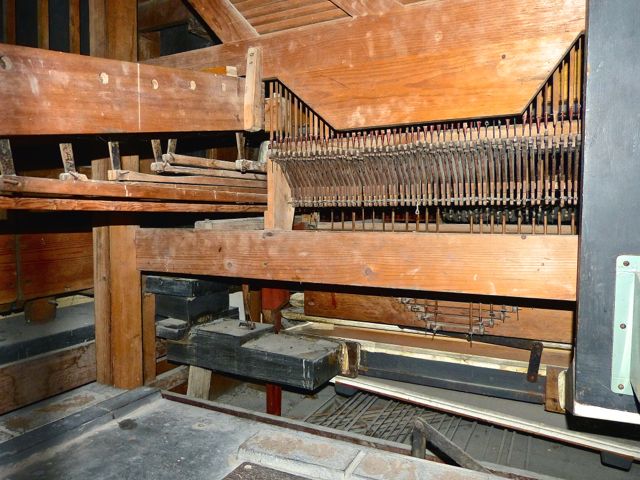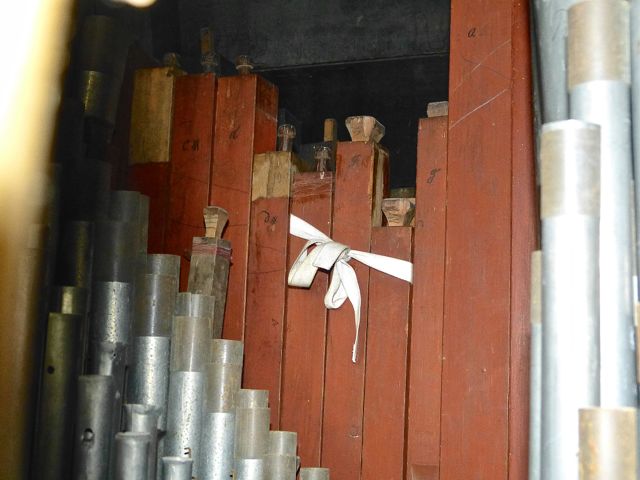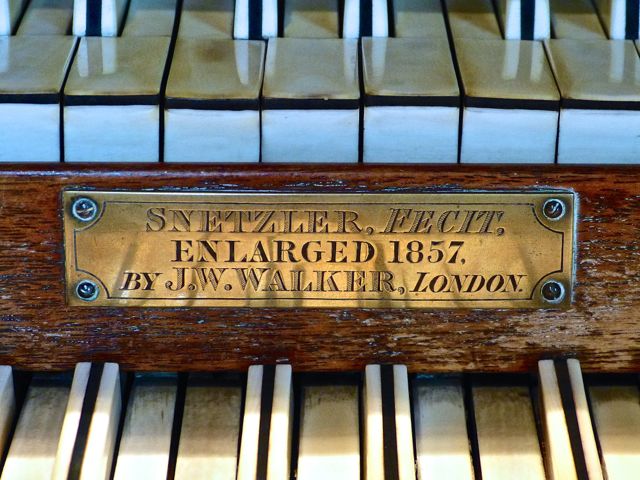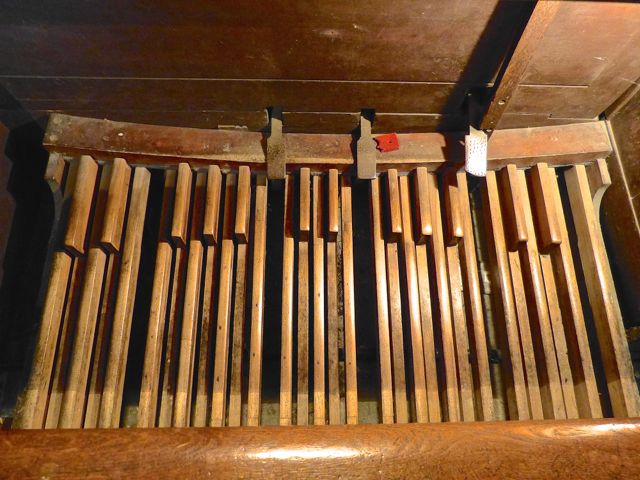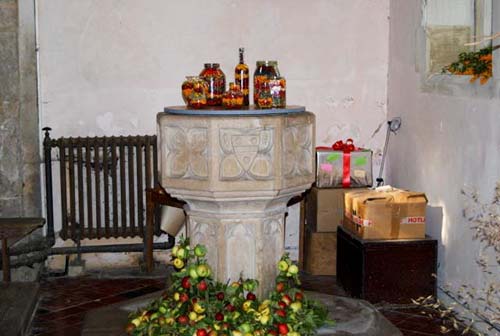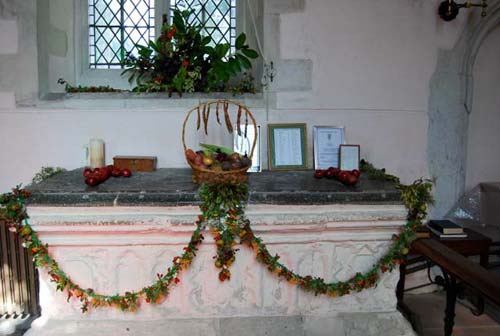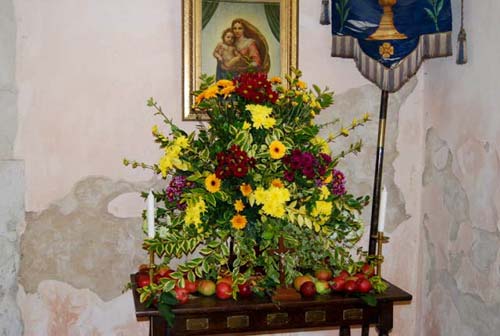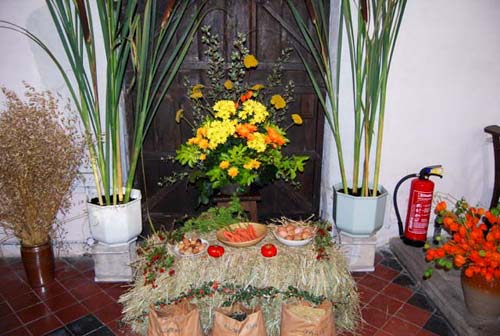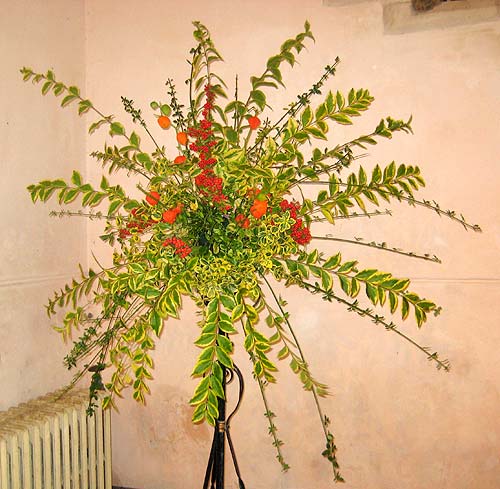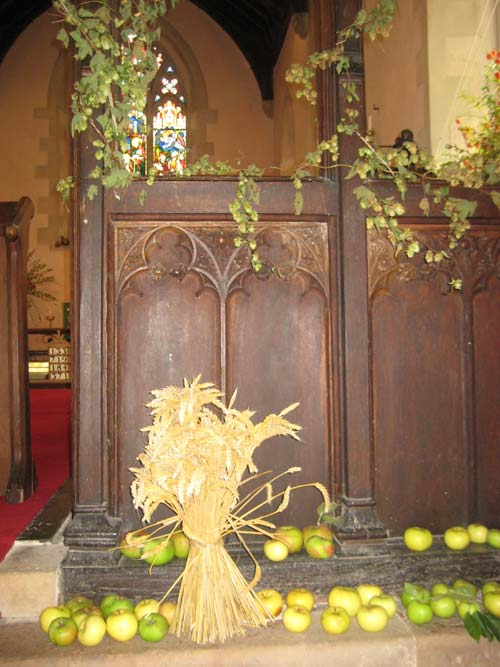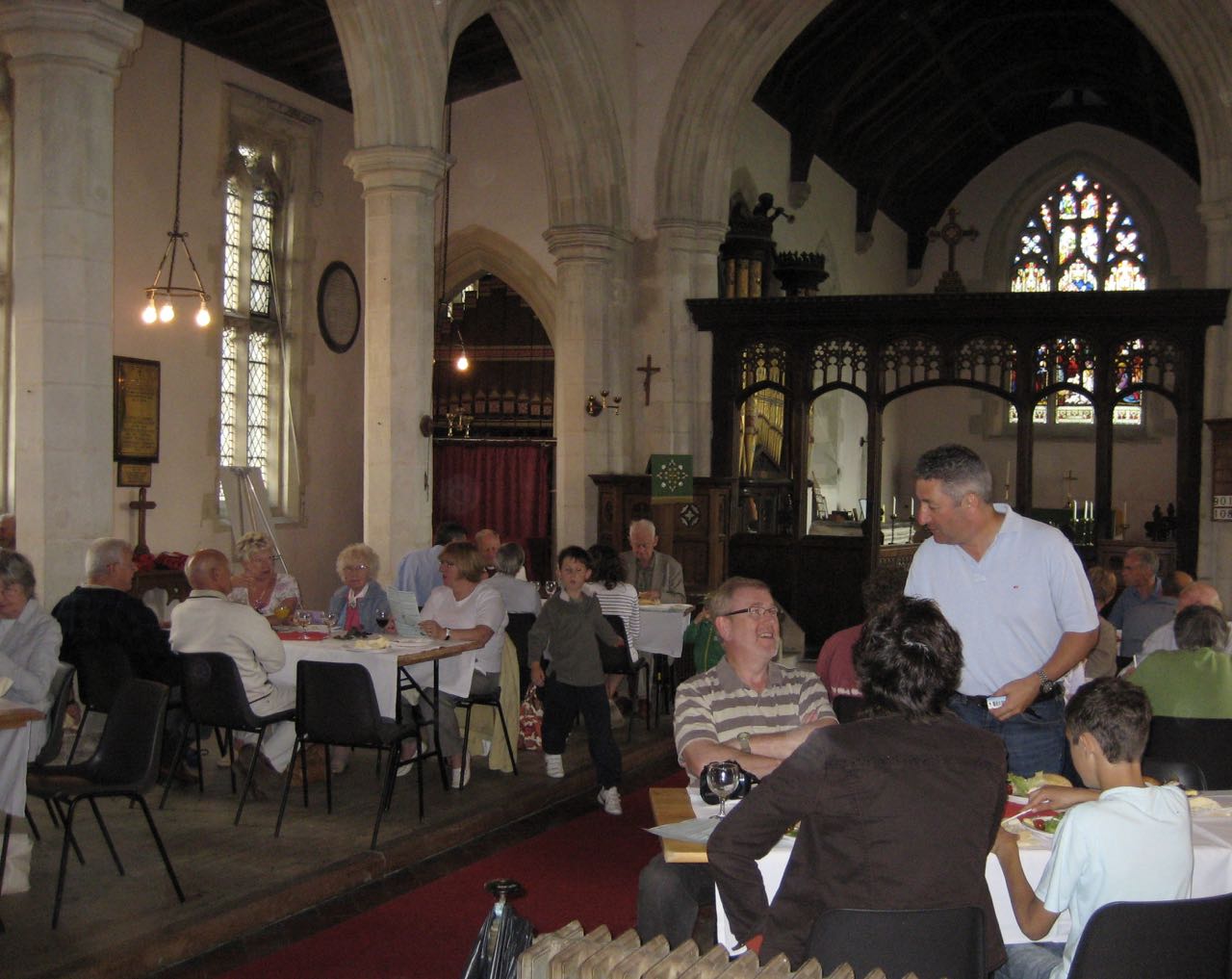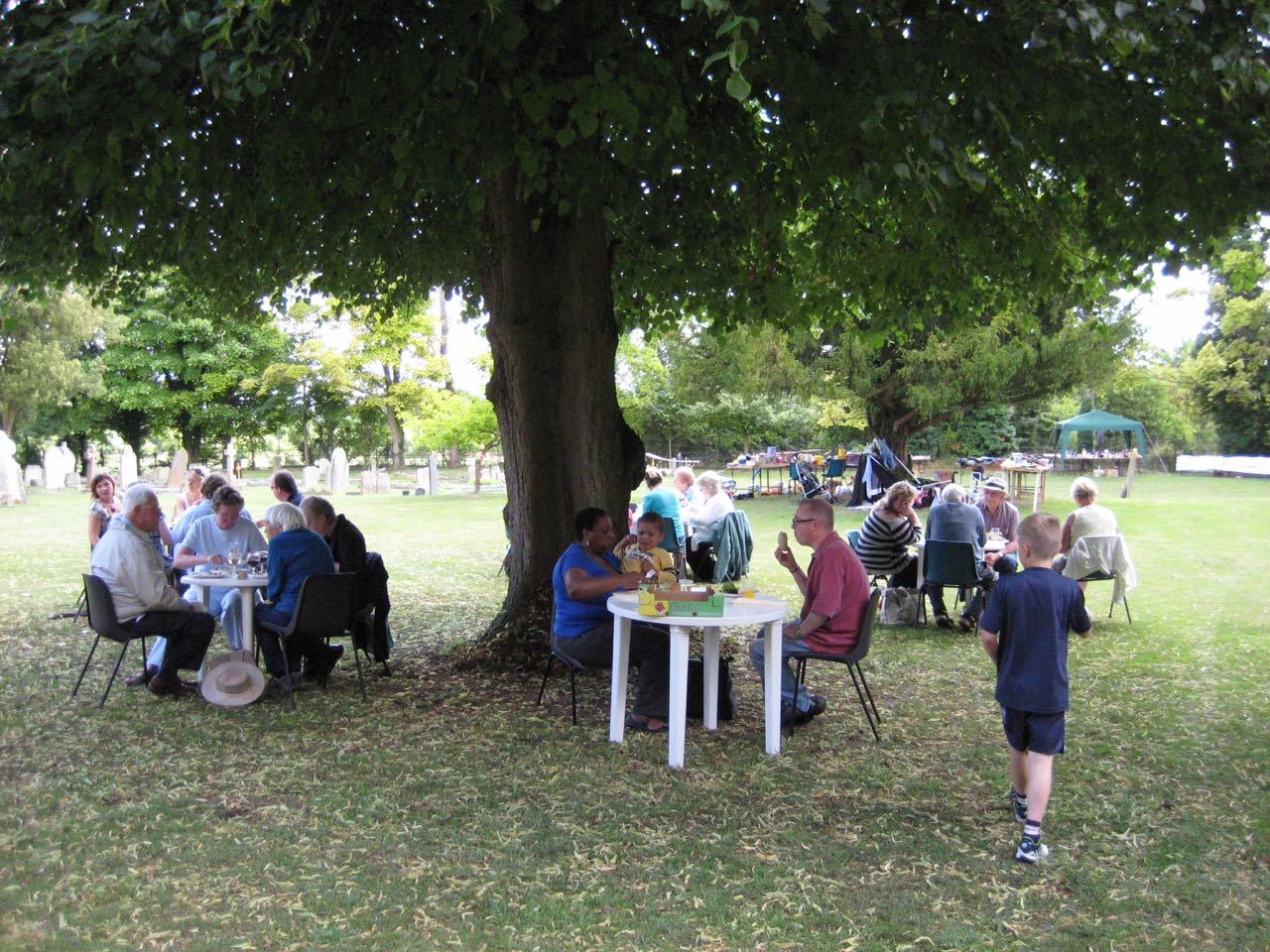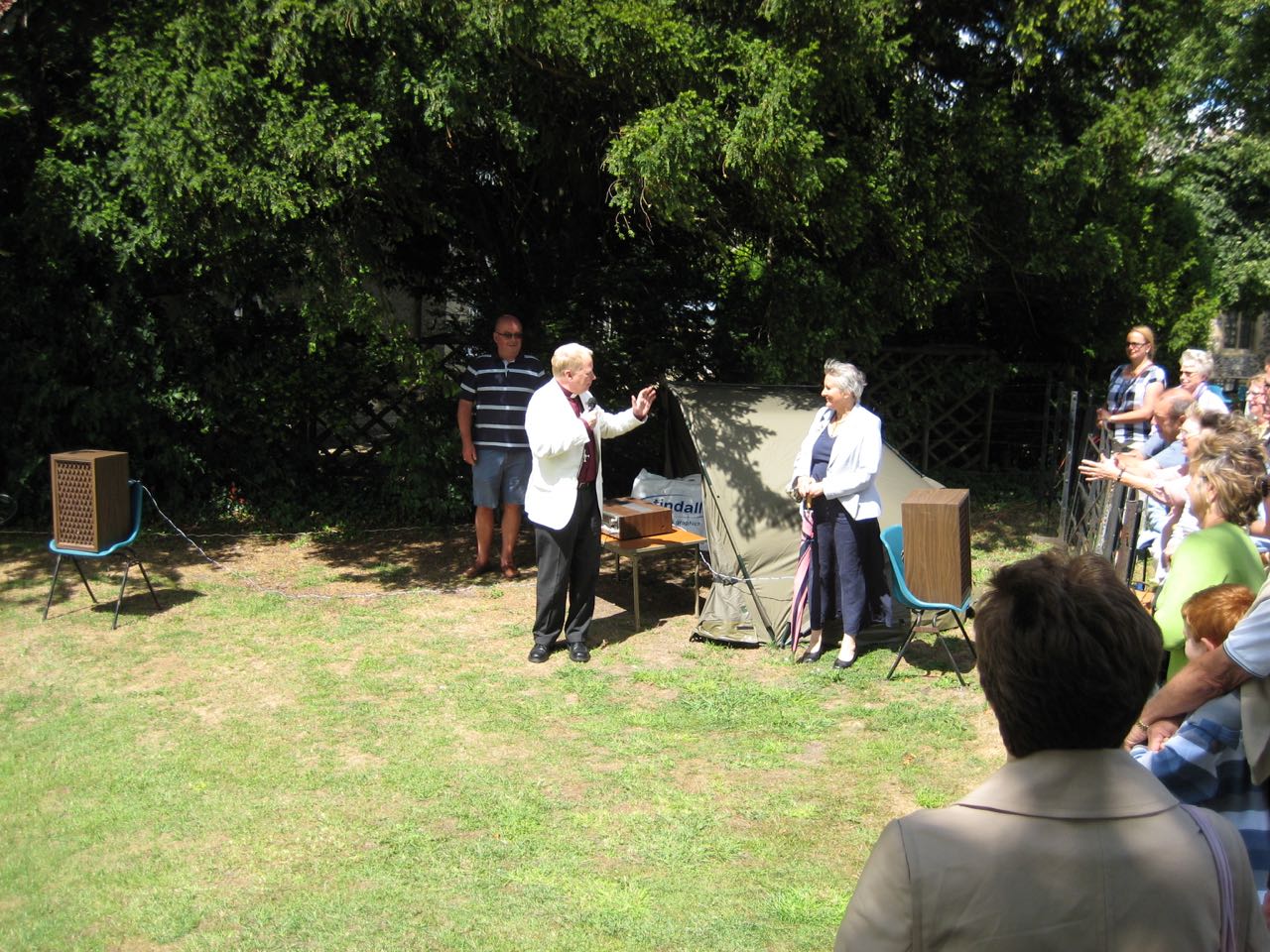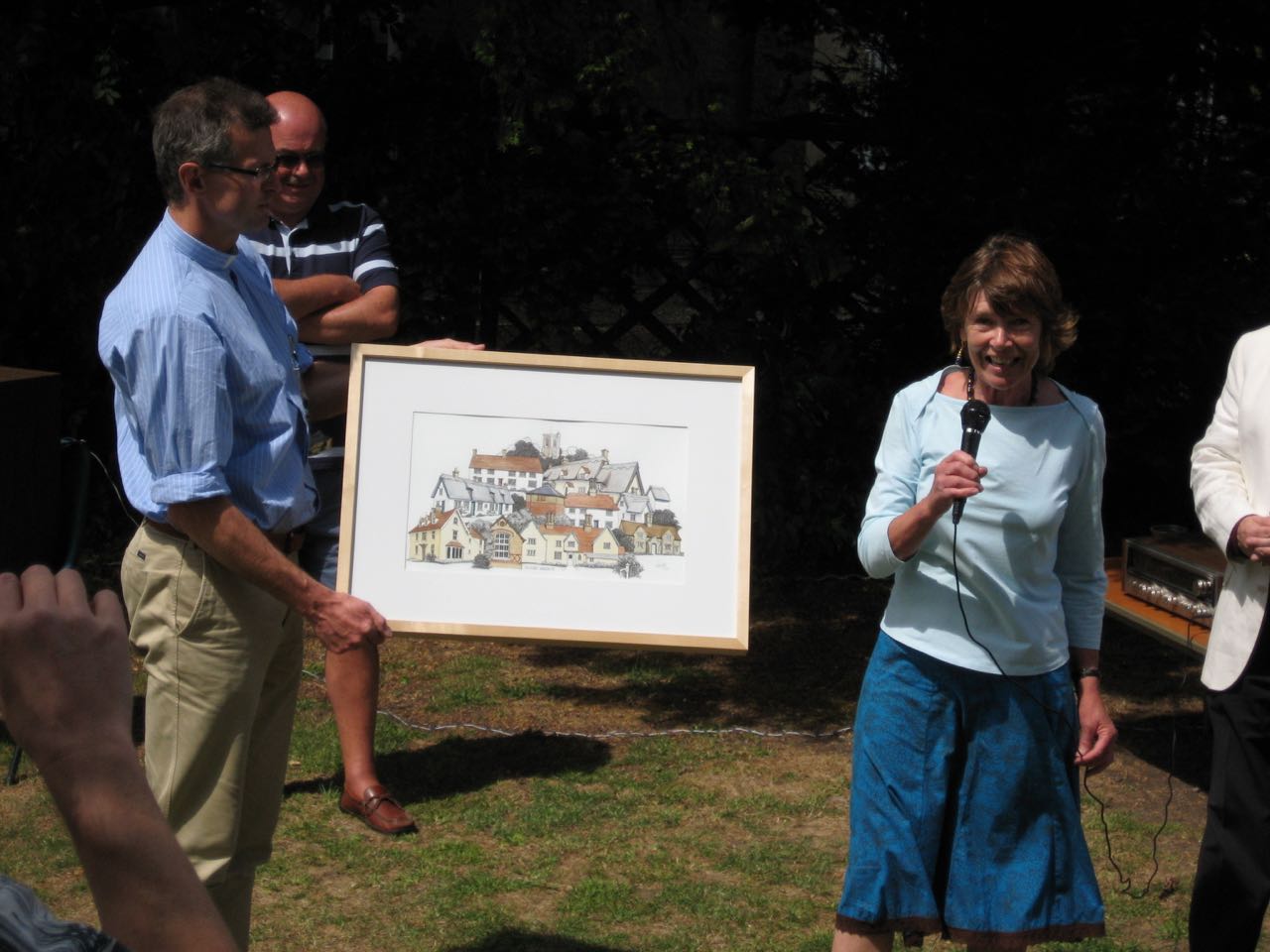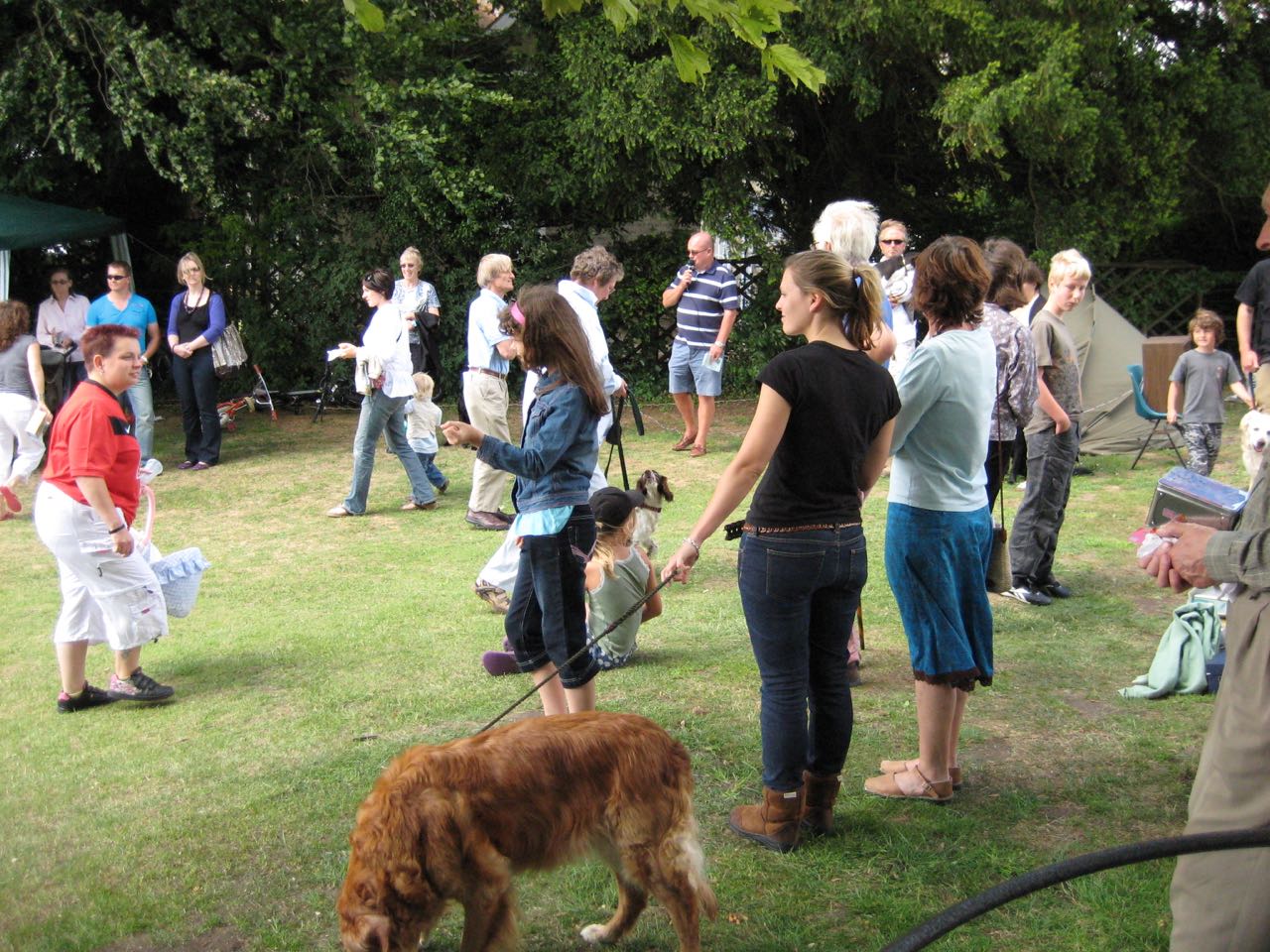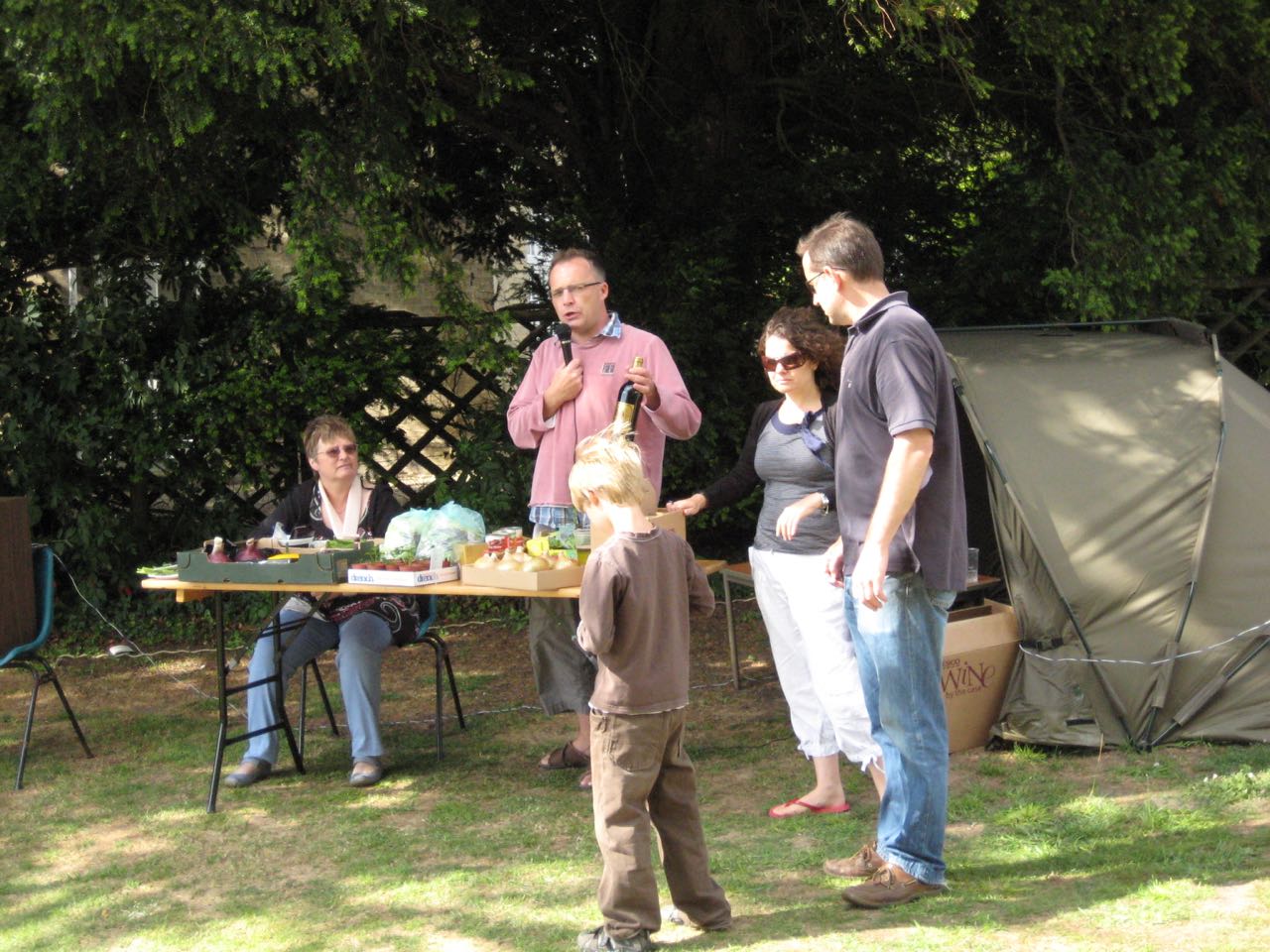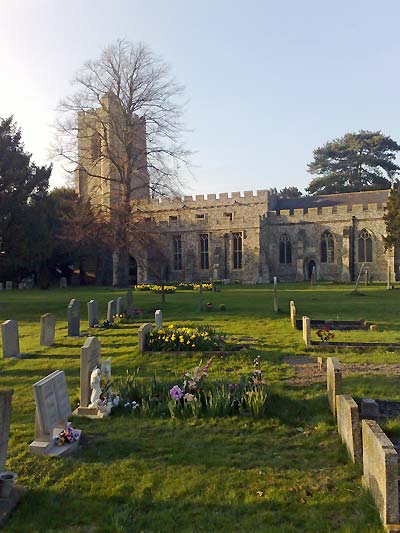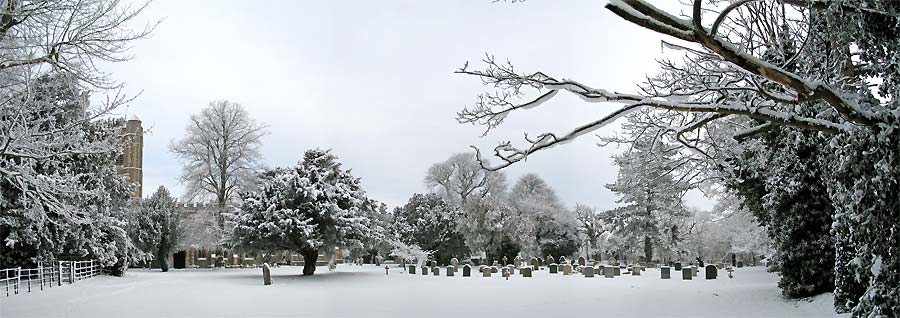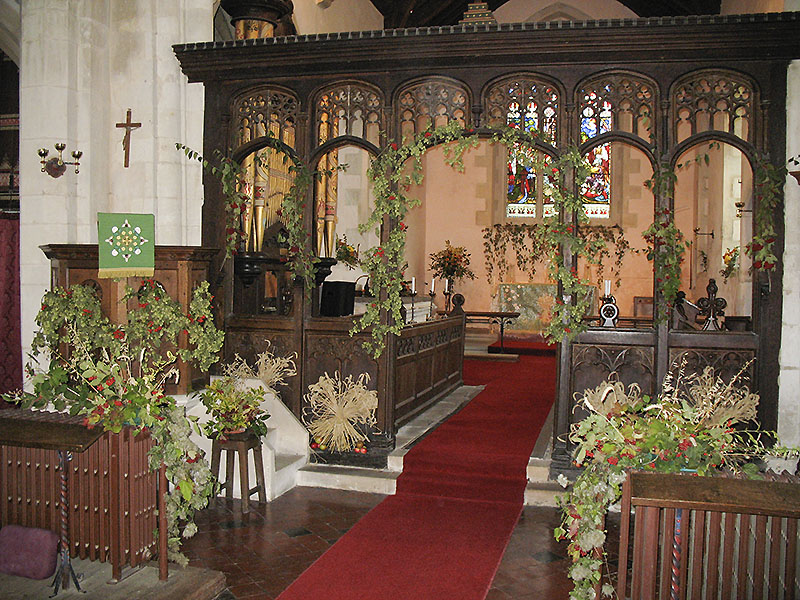





THE CHURCH OF ST MARY THE VIRGIN
Updated Friday 26 July 2024
Whaddon and Bassingbourn parishes are part of the same benefice. Follow this link to find out about St Peter & St Paul Bassingbourn.
At this time of widespread concern we are aware that there may be some in our community and families who may wish to be included in our prayers. If you would like anyone to be include by name in our prayers in services, then please e-mail the name(s) to churchwardens [at] whaddon.org.
Services and news from St Mary's
Coming up at St Mary's Church
This Sunday 28 July
There will be a service of Holy Communion at 9.30 am
Sunday 4 August
Morning Prayer from the Book of Common Prayer at 9.30 am
Sunday 11 August
Holy Communion at 9.30 am
Services later in August:
18 August: Morning Prayer
25 August: Holy Communion
Deanery Questionnaire
St Mary's Whaddon sits within the Shingay Deanery, which covers 19 parishes across the southwest corner of the Ely Diocese. The Shingay Deanery has put together a questionnaire to gather information from parishioners within the deanery to help in their planning for the future.
Paper copies of this questionnaire are now available to collect from the back of the church/church porch, or an electronic copy can be downloaded from the church pages of the Whaddon website via this link:
https://www.whaddon.org/st-marys-files/Deanery-Questionnaire-2024.pdf
Thanks to some electronic wizardry by Nigel Strudwick, this electronic version can now be completed in one of two ways. It can either be printed off and filled in by hand, or it can be saved onto your computer and completed electronically, and then either returned as an attachment to an e-mail to churchwardens@whaddon.org or printed off for submission by hand. We also plan to have some paper copies available to complete at the Village Fête on 13th July.
Completed questionnaires need to be returned by midday on Sunday 21st July and paper copies of the questionnaire should be returned to the church, or handed to any member of the PCC. While the questionnaire runs to 4 pages, and may therefore appear rather daunting on first sight, please feel free to only answer the questions that you feel are relevant to you and your circumstances.
Church Annual Report and Accounts
The Annual report and accounts for the year ending December 2022 are available on the web site at this link.
Latest PCC minutes
The latest approved PC minutes (March 2024) are available at this link.
-
Today (unusually), the church service was held in the churchyard for health reasons (the bats in the church produce droppings that affect asthmatics). Fortunately the weather was dry, if a bit cold...

-
19 September 2023
In line with current practice, Whaddon PCC has updated its Safeguarding Policy. A PDF version is available here. A copy will also be displayed at the back of the church. Anne Newberry is the PCC's Safeguarding Officer.
-
9 June 2021
Most of you probably know that the Church Roof has now been finished and the church is more or less back to normal.
Today the Royston Crow published an article on the roof which you can find here:
https://www.royston-crow.co.uk/news/whaddons-parish-church-roof-replaced-8039418
Here is David Grech's photo of the finished roof.
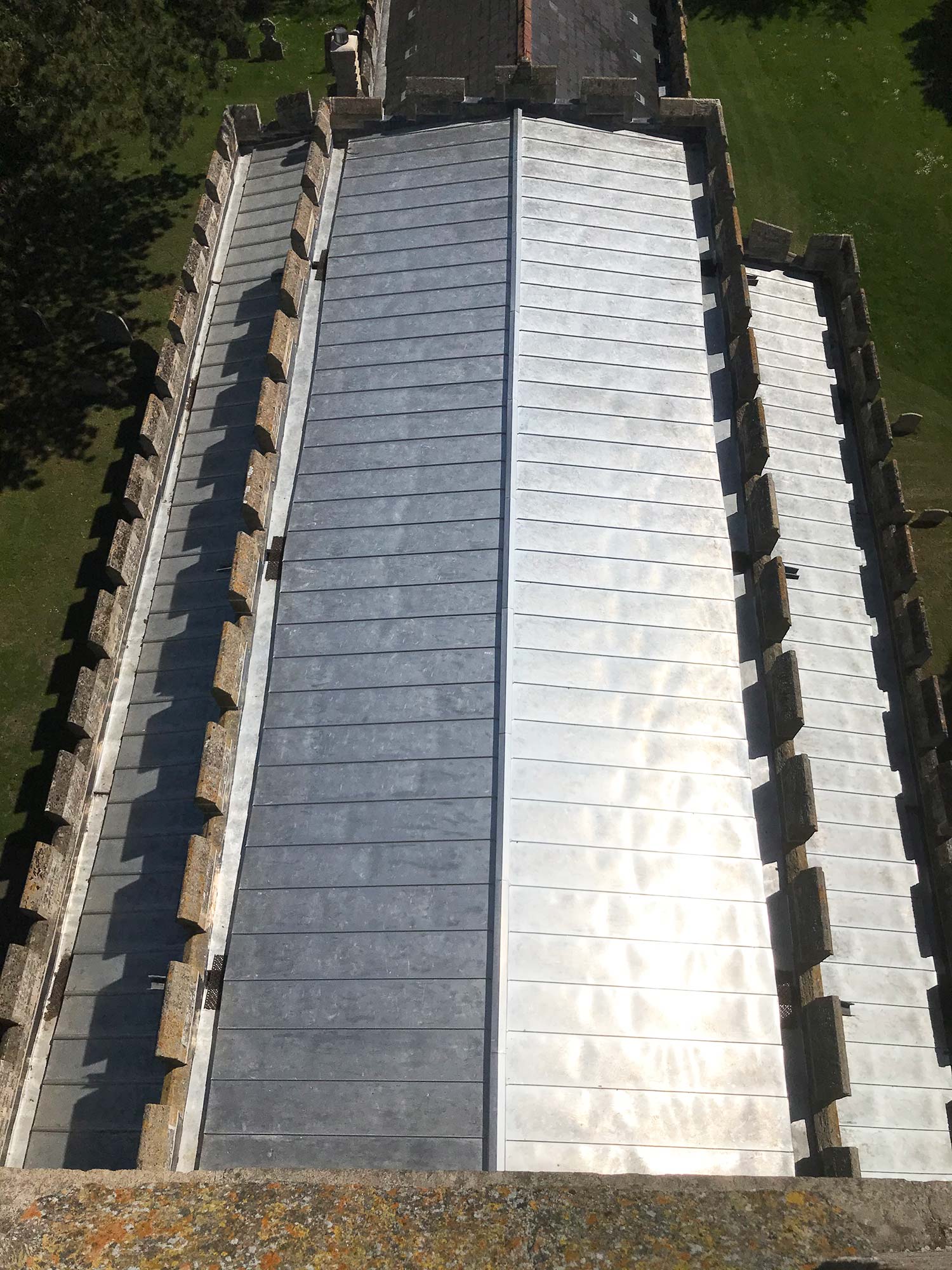
-
14 March 2021
Dear All,
Two important updates have gone out in the last week:
14 March: A week ago I sent round an e-mail to update the village on progress with our re-roofing project at St Mary’s and to let you all know about the problems we had encountered on the nave roof. A lot has happened in the last week, and all of it is positive I am pleased to say.
At the church, a forest of scaffolding has gone up inside the nave ready for the repairs to start this coming Monday, while the response to the funding shortfall has left me humbled by the generosity shown by the village. In the space of a week, we have had sufficient donations and promises of money to cover the shortfall in our funds for the roof repairs. This has been a salutary lesson for me; when the rot first came to light, I must admit to being quite down about it all, and uncertain as to how we would pay for the necessary repairs, while at the same time knowing we had no option but to undertake the work. I should never have doubted that we would work our way through the problem, and all I can say is Thank You.
I would love to be able to offer to take people up on to the roof to see the work in progress, or even just to show you the scene inside the nave with the scaffolding in place, but Covid and health and safety make that impossible. Please see the following photographs up for those that might be interested in seeing what is going on:
10 March: The re-roofing project has now been on site for five weeks, and this is probably a good time to give everyone an update on progress. There is both good news and bad news to report!
Starting with the good news: The re-roofing of the north aisle is now well advanced and all the new terne-coated stainless steel is in place and this roof only needs a few days' work to be complete. Similarly, the south aisle roof is also proceeding well and is, in fact, ahead of programme.
But now for the bad news: Preparatory work has started on the nave roof and this has uncovered significant areas of rot in the structural timbers. We have had to halt works on the nave while we brought in a structural engineer to assess the severity of the problem and to set out the remedial works required. A series of timber and structural resin repairs will be necessary at five different locations along the roof and, in order to undertake the work safely, a 'crash-deck' scaffold will need to be erected down the entire length of the nave inside the church.
The contractor has costed out the works and, including the scaffolding, we are faced with an extra of £20,000. We have some money in the fabric fund that we can put towards the cost of this work, and have also had a number of offers of donations to help with the cost, but currently we still have a shortfall of around £10,000 to fully fund the works. The Cambridgeshire Historic Churches Trust have indicated that they hope to be able to offer us a loan to keep the project moving forward, but of course that loan will need to be repaid.
We very much appreciate the support we have received to date from the village with this project, but faced with this additional cost we now need to ask if anyone is able to offer further support, no matter how small, to assist us in making up this shortfall. Any donations that can be 'Gift Aided' will also allow us to claim 25% back from the Inland Revenue. Please contact our treasurer (churchtreasurer[at]whaddon.org) if you would like to make a donation. We shall also be planning some more fund-raising events over the coming months, but obviously those will need to wait until we are out of lockdown and are able to socialise again. We have already provisionally pencilled-in a 'Champagne and Sparkling Wine Tasting' for Saturday 21st August, and more details of that event will be circulated nearer the time.
David Grech
Vice-chair, Whaddon PCC -
7 February 2021
Dear All,
Many of you will, no doubt, have spotted the scaffolding that has gone up on the church last week. This heralds the start of Phase 1 of our re-roofing project following the theft of lead in June 2019. Phase 1 is being mainly funded via a generous £25,000 grant from the Governments Cultural Regeneration Fund via Historic England and comprises the re-roofing of the North Aisle.
Last Friday we heard that our latest grant application to the Amey Community Fund has been successful, and we have been awarded £23,000 towards the cost of Phase 2 of the project, which is to re-roof the Nave and South Aisle. This grant aid, together with the grant of £4,000 from Cambridgeshire Historic Churches Trust and the very generous funding from the local community, means we now have the funds to proceed with Phase 2. Next week we will be meeting with the contractors to see if we can undertake Phase 2 in parallel with Phase 1 and complete all the re-roofing before our resident population of bats start breeding in May. However, it may be that we have to postpone Phase 2 until September if there is insufficient time to complete it before May.
On behalf of the PCC I would like to thank all who have supported this project, including Historic England, Amey Community Fund, Cambridgeshire Historic Churches Trust, and - not least - our local community. Without your support we would not be able to bring this project to fruition. I would also like to thank Susan van de Ven, our local County Councillor, and Lee Ginger, as chair of the Parish Council, who gave their enthusiastic support to our bid to the Amey Community Fund.
David Grech
Vice-chair, Whaddon PCC -
9 July 2019
A "crowdfunding" page has been set up as part of the village's effort to raise the £50,000 needed to replace the roof. You can find it here:
https://www.crowdfunder.co.uk/a-new-roof-for-st-marys-whaddon-after-lead-theft
Please consider donating as St Mary's needs all the money it can get for this project.
Here is a recent composite picture of the roof before and after the theft.
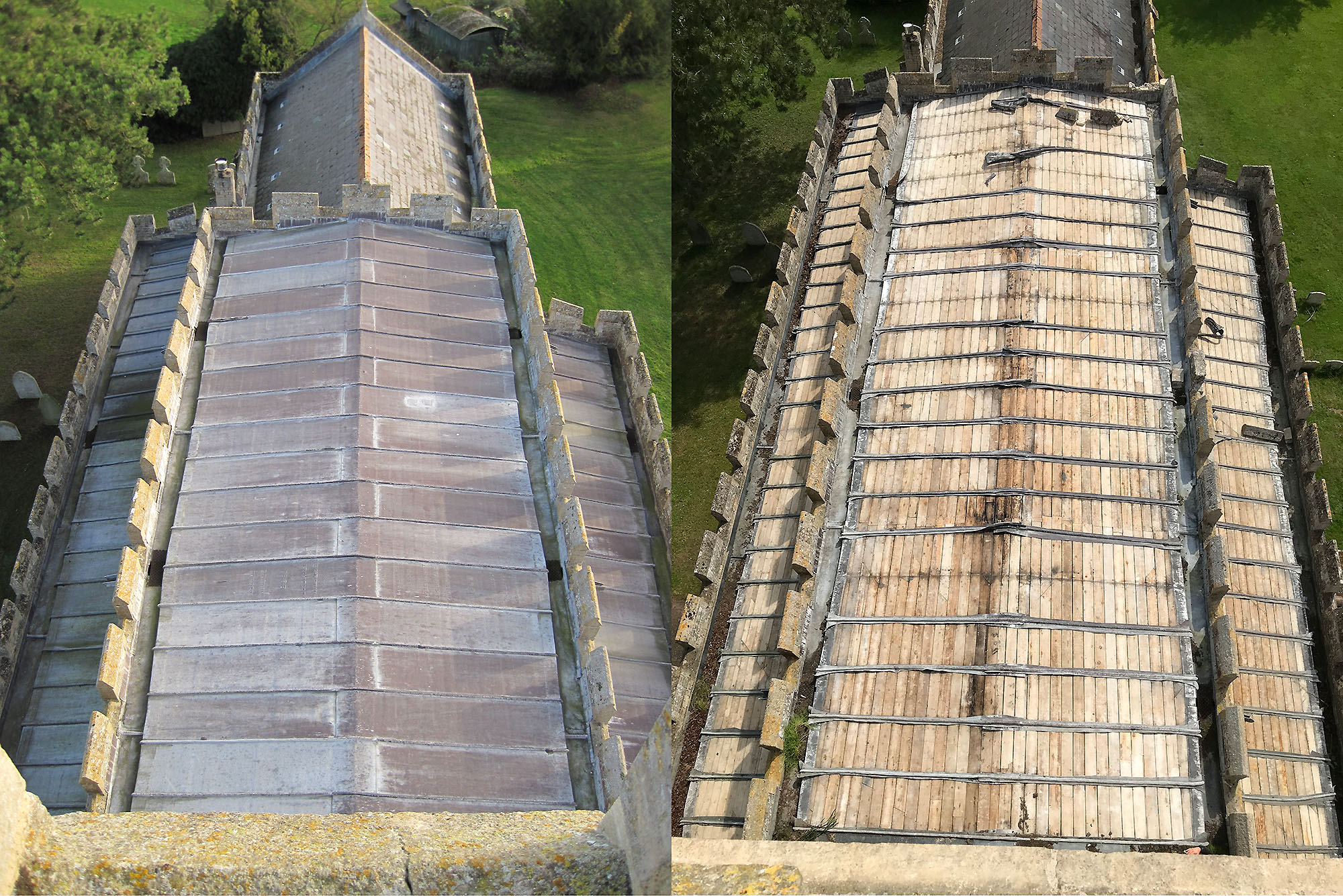
3 July 2019
Villagers will be aware by now that the lead was stolen from the church roof some time around 20 June 2019. Updates are mainly sent out via the village email system but here is a summary, where further information will also be posted as it comes in.
The bare roof has now been covered with roofing felt to ensure that it is watertight. Negotiations are ongoing with the Diocese about covering the roof with a material other than lead which is of less interest to metal thieves.
Although such a material will be cheaper than lead, the nature of church roof insurance will mean that the cost of replacement will in no way be fully covered. This means that fundraising will have to take place to find the shortfall. This fundraising will take many forms, and an online "crowd-funding" approach is being investigated now and it is hoped that it will be active before the Church Fete on 13 July.
Please keep watching this space...
-
1 April 2018
Tea and hot cross buns being enjoyed after the Sunrise Service on Easter morning
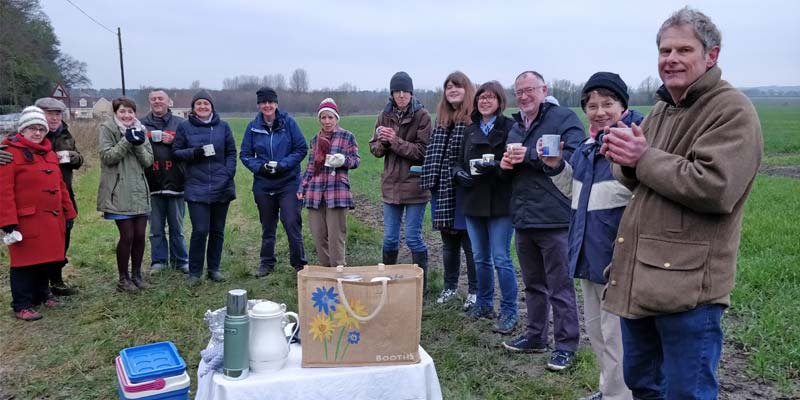
-
The vicar of the benefice is the Reverend Helen Orr.
Helen will be in the benefice (unless away on holiday or training) on Tuesdays and Thursdays every week as well as on Sundays. Her contact details are as follows:
The Reverend Helen Orr
Vicar of Bassingbourn and Whaddon
The Vicarage
19 North End
Bassingbourn SG8 5NZEmail: vicar[at]whaddon.org
Telephone: 07761 241190

Contact Mrs Karen Coningsby 01223 207514 churchwardens [at] whaddon.org Mr David Grech 01223 208938 Parochial Church Council:
Office
Contact
Rev Helen Orr Chair vicar[at]whaddon.org ; 07761 241190 Rev Amanda O’Neill
Associate Minister
Mrs Karen Coningsby
Churchwarden
01223 207514 churchwardens [at] whaddon.org
Mr David Grech
Churchwarden and vice-chair of PCC
01223 208938 churchwardens [at] whaddon.org
Mrs Clare Hales
Secretary
clairehales156 [at] gmail.com
Mrs Jenny Grech
Treasurer
01223 208938 churchtreasurer [at] whaddon.org
Mrs Anne Warrack
Deanery Synod Representative
01223 208285
Mrs Iris Green 01223 208072 Mr Peter Haselden peter.haselden [at] sky.com Mrs Helen Strudwick
01223 207434
Contact Simon Morris Licensed Lay Minister simon.68.morris[at]gmail.com Anne Newberry Safeguarding Officer 01223 207555
[Please also see the 2020 notes on the church by David Grech as a Village Fact Sheet]
A guide to the church of St Mary Whaddon
The Church of Saint Mary, Whaddon, stands on a slight rise in the centre of the village which gets its name from the Anglo-Saxon Wadune, meaning Wheat Hill.
There has been a church in Whaddon since at least Domesday when the names of priests Turbert and Ralph are mentioned in the Domesday Book. We do know that during the twelfth century, Hugh de Scalers, a member of the Norman de Scalers family, who owned of a large part of Whaddon for over 400 years, gave Whaddon church to Lewes Priory where Henry, his son, became a monk. The Priory later granted the church to King Edward III. [For history and information about Lewes Priory, see this web site.] In 1351 it was granted to the Dean and Chapter of St George's Chapel, Windsor, who administered the estates and appointed incumbents. The estates were turned over to the Ecclesiastical Commissioners in 1867. To this day the advowson (the right of presentation to a vacant benefice) remains with St George's Chapel. In 1932 the benefice was united with Meldreth but in 1952 this was dissolved and it was united with Bassingbourn.
**
The present church is a very attractive building both externally and internally and is of various dates from the 13th to the 15th century. It is typical of churches in East Anglia being constructed of pebble and flint. Because of the low-lying countryside the square mediaeval tower with its battlements is easily seen through any trees and presents a lovely picture on the approach to the village from the A1198.
The church is in the Early English style of architecture; its outside cornices revealing many different carved faces, heads and designs beneath the battlements and beside the windows and doors.
The most ancient parts of the church that remain are the dog-tooth moulding on the chancel arch, which dates back to late thirteenth century and the north and south arcades of the nave, but even these are not in their original proportions as changes have been made to them.
During the fourteenth and fifteenth centuries the church seems to have been entirely rebuilt; and contains examples of both Decorated and Perpendicular styles of architecture. The clerestory with quatrefoil windows and square surrounds was added and the arcades were altered by resetting the arches and lengthening the pillars. The arcade is of impressively tall Decorated octagonal piers, five bays long with double hollow chamfered arches. The aisle walls, with their tall and narrow two-light windows, their transoms and square heads filled with tracery show a transition from Decorated to Perpendicular. The tower arch goes with them and the whole west tower is Perpendicular. It has a stair turret higher than the battlements of the tower. A new three-light west window was put in and the chancel was rebuilt. The chancel arch has three-shaft responds, the dog-tooth moulding and some nail-head decorations in the capitals. The font, the chancel rood screen and the fitting up the church with oak benches, the roofs of the aisles and the roof of the nave, which is of oak with finely carved bosses of animals, birds and flowers, were all installed at this time. The chancel rood screen is oak. The divisions of the screen have simple tracery above the flattened arches and the lower panels are decorated with flowers and two carved figures rudely put out their tongues. There is a heavy oak cross on the screen which used to stand on the altar. One interesting feature in the nave is what is obviously a blocked doorway to the right of the rood screen. This could have been the entrance to a rood loft which the Reverend Clare, vicar of the parish from 1943 to 1952 and amateur historian, said that he had seen evidence of by indents for supports on the top beam of the screen.
The font, by the north door, is octagonal in shape and bears the arms of the de Scalers on the eastern face. It would appear to have been without a cover at some time as in a visitation in 1685 it was reported:
At Whaddon the font wants Cover and Plugge
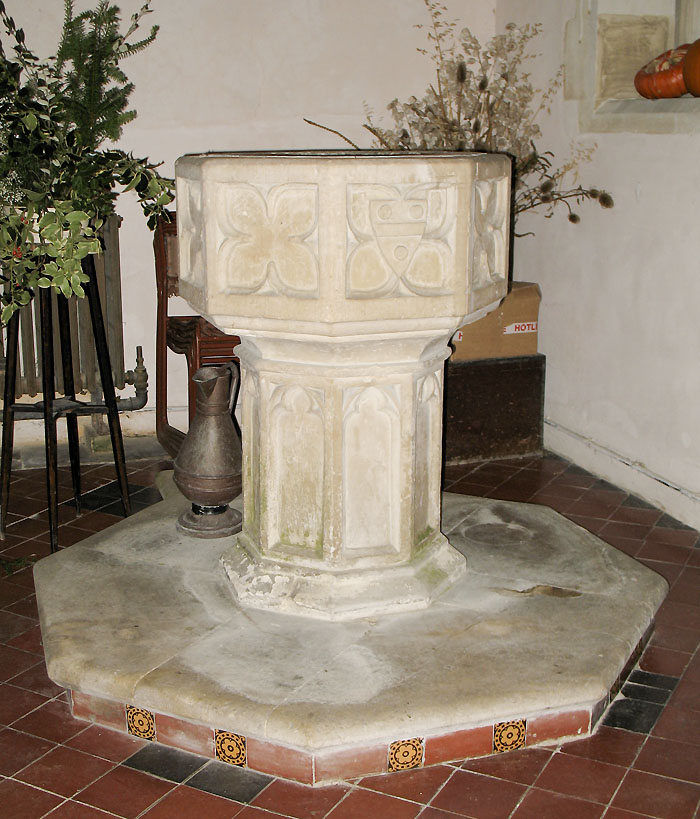
Left: the font. Click on the image for more information from the Baptistera Sacra index
Right: detail of the arms of the de Scalers family


A look up at the roof reveals carved bosses in the centre of the roof and carvings at the ends of the beams-all different.

In 1852 the condition of the church was recorded as poor and the windows much mutilated and the west window was blocked.
Lead was stolen from the chancel roof in 1835.
By 1868, over £2000 was required for work on the restoration of the chancel, nave aisles, tower and the installation of an organ chamber. Further work was done in 1873. At the time the necessary work needed on the tower was left until a later date but a few years afterwards the structure of the tower showed signs of giving away and the upper part of the tower was taken down. For years afterwards efforts were made to raise the necessary funds for rebuilding the tower and eventually between March and September 1894 the work was carried out. The cost of the restoration was about £500. A look at the south side of the tower below the top window will reveal the change in colour between the original flint and stone and the new. New windows were also donated at that time.
Further work was carried out on the chancel in 1949 when memorial slabs were uncovered and the floor returned to its mediaeval level.
**
Clearly visible in the chancel are memorials, some with coats of arms, of influential members of the community. The first of these were the de Scalers. Scalers manor house stood south-east of the church, m the centre of the chancel is a marble slab of Thomas de Sealers and his wife - 1364 and beside the south wall that of John de Scalers - 1388.
The large tomb in the chancel is that of John de Scalers who died in 1467. At the restoration of 1868-69 the tomb was moved to its present position to make room for the organ and when the tomb was reset the panels on the west side were reversed. In 1949 it was found that the marble slab did not belong to it. Some of the brasses recorded were removed in 1643 and some were stolen in the nineteenth century.
In 1949 the Rev Clare reports having seen an indent under the choir stalls to John More who married into the de Sealers family -1493.
The Tempests followed the de Scalers as Lords of the Manor from about 1608 and a marble slab bears the memorial to Thomas Tempest 1644 and his wife Martha 1652.
The Pickerings bought the manor from Martha and four memorials remain from 1661-1732, each one bearing enough information to piece together their life story. There is also visible the memorial to Elizabeth Glover, companion to Dame Grace Pickering.
**
On the west wall is the heraldic hatchment of Philip Yorke KG, third earl of Hardwicke, who died November 18th, 1834 at the age of 77 years. His elaborate tomb can be seen in Wimpole Church. The hatchment was found by accident in the yard of a firm of builders and decorators by the Rev Clare in 1945 who recognised it for what it was. It was given to him by the owner and he had it restored and hung in the church
**
On the north wall there is a plaque to the Rev Allen Hurlock, for 55 years vicar of the parish, who died in 1853 and to his wife who died in 1845. In the north aisle is the tribute to the fallen in two wars and all around the church are to be found various memorials provided by the families to commemorate their loved ones.
[Images of the war memorial will be found on a separate tab.]
**
Throughout the years there have also other been other gifts by parishioners of chalices, pattens, candlesticks and bibles, the earliest ones being from Dame Grace Pickering in the early 1700s.
**
The organ was presented to the church in 1857 by Mr John Felix Beaumont of Town Farm. The instrument, which was originally built as a chamber organ, was bought by Mr Beaumont from a music dealer and he had the instrument restored by JW Walker, Organ Makers, who did further work, adding to it and modifying it in 1864 and again in 1869, making up the organ we see today. During the church renovations of 1868-9 the organ was taken down and placed in the Royston Institute (now the Town Hall), during which period, any profits arising from its use were divided between Whaddon Church and the Institute. Before the advent of electricity local boys were employed to work the bellows. The amount of air required varied with each organist.
Two traditions grew up around the organ. It was originally thought to have been made by John Snetzler (1710-1785), who was born in Switzerland, but the organ is now thought typical of the work of JW Walker. Also it was thought to have come originally from Manchester Cathedral. The archivist from Manchester Cathedral was unable to verify this, but the Cathedral organ was substantially altered in 1857, so part of it could have found its way into Whaddon's organ, and certainly the fine carved angel, blowing a gilded trumpet which surmounts the organ case, does suggest a former position in a great church. It was described in 2008 in a report commissioned on the history and condition of the organ 'as a precious instrument... historically interesting... hardly altered since 1869... musically beguiling and well suited to the church'. Over the years it has been enjoyed by many visiting organists.
**
The clock on the south facing, wall of the tower is the gift of Dame Grace Pickering, second wife of Sir Henry Pickering, Baronet. Her will was proved in 1733.
I give and bequeath to the parish church of Whaddon ... fifty pounds of good & lawful money of England, fforty of it to sett up a good Clock in the steple of that church (if l dont happen to do it as I designe in my life time) with handsom Dialls each way, and the other ten pounds to keep it in repair and wound up as long as it will last and then I think the parish may afford to do it for themselves without thinking much of it.
Why has the clock only one dial in spite of her request? There is evidence in the tower that an attempt was made to provide a dial on the north side. Why the work was abandoned we do not know. Perhaps it was too difficult. When the tower was repaired in 1894 a new stone dial was given to the clock to replace the old lozenge-shaped dial which had been made of red wood and painted blue.
**
The bells in the tower bear the inscription MICHAEL DARBIE MADE ME 1671. However, Darbie's reputation amongst bell founders was not very high and it is likely that he recast older bells to make the peal in Whaddon as it is known that there were bells here before the Reformation. The massive oak bell-frame (15th century) made of roughly squared tree trunks, is older than the bells and bears signs of having housed a peal differently arranged from later bells.
Images © Nigel Strudwick 2012
**
The coloured three-light east window by Gibbs 1868 was given to the church by the Beaumont family in 1868. It is to the memory of William 1856, Elizabeth 1866 and William jun. 1854. This was badly damaged by blast in the last war. It was repaired by W.H. Constable of Cambridge in 1948 and very little new glass had to be supplied. The face of Our Lady in the middle light, which had been badly cracked, is the original face.
The coloured window on the south side of the chancel was donated by the congregation in 1869.
In 1948 Constables of Cambridge made up a quarry of pieces of ancient glass, found by a relative of Mrs Clare, in the ruins of Ypres Cathedral, during the First World War. This was set in the middle of the window on the south side of the chancel.
Outside in the porch are two ancient stones. These were unearthed from a rock garden outside the vicarage in 1943. The Rev Clare was told that whilst repair work on the chancel was being undertaken during the incumbency of Rev Ireland (1881-84), these two stone brackets which had supported the stone slab on the tomb of a Mrs Fitzhugh (1727) had had to be removed and were used as supports for a flat stone portico over the door of the vicarage. After the fire of 1904 when the vicarage was burned down, they were buried in the rock garden. The design of these stones with scrolls with facets instead of the usual roll are quite rare; the Rev Clare placed them in the porch.

Worthy of inspection is a large collection of carved heads of people and animals and other simple designs which adorn the cornices under the battlements and beside the doors and windows The ones on the south side are in the better condition; those on the north side being much weathered.

Sources
Victoria History of the County of Cambridge Vol. VIII Cambridge Collection The notes of the Rev Clare (Vicar of the Parish 1945-52) Royston Crow
© S. & J. Ralls 2002
Update on the organ © S. & J. Ralls 2009
Originally prepared as an information leaflet
Photos of the font © Nigel Strudwick 2007
Whaddon's war memorial is inside St Mary's Church. It consists of three elements, brass plaques dedicated to the fallen of World War I and World War II, and a separate stone commemorating Jack Smith, who is named among the dead of WW2.
Every year at the Remembrance Service in November, the names on the plaques are read out. Villagers who remember Edward Ted
Webb, lifelong resident of the village and chairman of the Parish Council until not long before his death in 2008, will recall him reading out this list each year. He would end his reading with the words …and my brother, Bernard William Webb
, a most poignant moment. Ted's brother was killed in a bomber crash over Germany in 1944.
There is an entry for this memorial in the database of memorials of the Imperial War Museum (albeit with the wrong location).
The following photographs were taken by Nigel Strudwick in January 2017.
St Mary's has a choir that performs for special events in the Church Year, such as Easter, Harvest and Christmas. If you are interested in coming along, please contact Helen Strudwick at choir [at] whaddon.org.
-
This description comes from the guide to the church by S and J Ralls on the adjacent tab.
The organ was presented to the church in 1857 by Mr John Felix Beaumont of Town Farm. The instrument, which was originally built as a chamber organ, was bought by Mr Beaumont from a music dealer and he had the instrument restored by JW Walker, Organ Makers, who did further work, adding to it and modifying it in 1864 and again in 1869, making up the organ we see today. During the church renovations of 1868-9 the organ was taken down and placed in the Royston Institute (now the Town Hall), during which period, any profits arising from its use were divided between Whaddon Church and the Institute. Before the advent of electricity local boys were employed to work the bellows. The amount of air required varied with each organist.
Two traditions grew up around the organ. It was originally thought to have been made by John Snetzler (1710-1785), who was born in Switzerland, but the organ is now thought typical of the work of JW Walker. Also it was thought to have come originally from Manchester Cathedral. The archivist from Manchester Cathedral was unable to verify this, but the Cathedral organ was substantially altered in 1857, so part of it could have found its way into Whaddon's organ, and certainly the fine carved angel, blowing a gilded trumpet which surmounts the organ case, does suggest a former position in a great church. It was described in 2008 in a report commissioned on the history and condition of the organ
as a precious instrument... historically interesting... hardly altered since 1869... musically beguiling and well suited to the church
. Over the years it has been enjoyed by many visiting organists.The fame of the organ extends beyond the parish, enticing, for example, a group of Dutch visitors to St Mary's in October 2001 as part of their tour to celebrate
The Beauty of the British Organ
.The organ also features in the The National Pipe Organ Register.
-
Today the organ is much in need of maintenance, and the photos in the adjacent tab were taken in March 2016 as a precursor to fundraising for it.
-
David Grech writes (and took the photos):
This year's Harvest Festival was held on Sunday 28th September and once again the church was beautifully decorated with flowers and a variety of produce grown in parishioners' gardens (and those of their families and friends). A huge pumpkin 'topped-out' the display on the font, while floral decorations brought colour to the window ledges and every corner of the church. The decorated church provided a fitting setting for the Harvest Service led by Rev Caroline Yandell and which included a performance by the Whaddon choir of 'O Lovely Peace' , adapted from a duet from Judas Maccabaeus by Handel.

